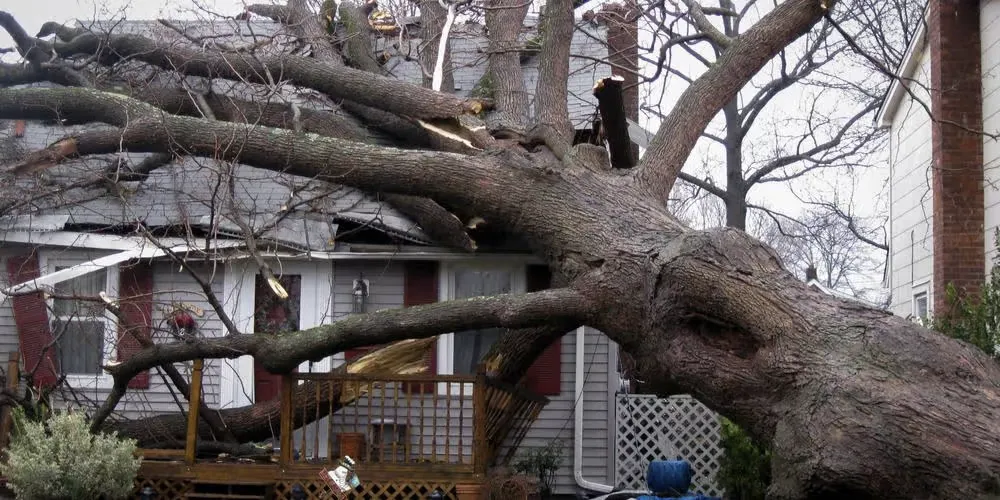Few experiences are as jarring for homeowners as discovering a fallen tree on their property, especially when it occurs in the aftermath of a powerful storm. The sight of a massive trunk sprawled across your yard or, worse, leaning on your home can induce anxiety and uncertainty. Knowing what immediate steps to take is crucial not only for protecting your property but also for ensuring your family’s safety. This article will guide you through the essential actions to take after a tree falls, from emergency tree removal steps to important safety considerations.
Prioritize Safety First
The most important concern after a tree falls is safety. If the fallen tree has landed on your house, avoid rushing inside to assess the damage. Structural integrity may be compromised, especially in areas directly impacted by the tree or where branches have pierced the roof, walls, or windows. Be alert to hazards such as live electrical lines entangled with tree branches, gas leaks, or unstable debris.
Check everyone in the house and evacuate if necessary, especially if you notice creaking, shifting walls, or the smell of gas. Leave the house and keep a safe distance until professionals confirm it’s secure to return. If the fallen tree brings down power lines or blocks access to essential services, call 911 or your utility provider immediately. Never attempt to move live wires or branches tangled with them.
Assessing the Damage
Once you are certain everyone is safe and the immediate danger has passed, assess the situation from a distance. Take photos or videos of the fallen tree and the areas it affected. Documenting the scene thoroughly is vital for insurance claims and for communicating with emergency tree removal professionals.
Check if the tree caused visible structural damage to your home. Look for cracked walls, holes in the roof, broken windows, or displaced doors and beams. If you notice any severe damage, refrain from entering the affected rooms. Note if the tree blocked driveways, roads, or damaged vehicles, as this may influence which services you contact first.
Contacting Professionals
With your documentation in hand, your next call should typically be to your homeowner’s insurance provider. Provide them with a clear description of the incident, the initial photos, and any information about urgent risks such as live wires or flooding. This quick notification can help initiate your claim process and expedite any support you might need.
You will also need to contact a reputable emergency tree removal service. Professional arborists are equipped to handle large, unstable trees and can mitigate further damage during removal. Never attempt to use chainsaws or heavy equipment yourself—doing so can be extremely hazardous, especially if the tree is resting precariously or is entangled with utilities.
If the event happened during widespread storms, demand for these services will be high. While waiting for professionals, do not allow anyone to climb onto the roof or attempt DIY removal. Homeowner safety after storm damage should always come first.
Preventing Further Risks and Damage
Depending on the damage, you may need to take steps to prevent further harm to your property. If it is safe and without endangering yourself, you can cover holes in the roof or broken windows with tarps or plastic sheeting to protect against rain and further water damage. Keep these temporary measures minimal and only if the affected area is stable.
Similarly, if you must block off areas of your property to keep passersby or pets away from danger zones, use caution tape or clear signage. Do not allow children or neighbors to approach the fallen tree until emergency services confirm it’s safe.
Schedule an inspection with a structural engineer or qualified contractor if the tree struck your house. Even if the damage appears minor, hidden issues may threaten the safety of your home in the future. Ensure all repairs meet local codes and are conducted by licensed professionals.
Reflect and Prepare for the Future
Once your immediate crisis is addressed and your insurance claim is in progress, take time to consider measures that can prevent similar incidents. Consult an arborist to assess the remaining trees near your home, prune hazardous branches, and remove any dying or leaning trees at risk of falling in future storms. Regular tree maintenance is crucial in reducing the likelihood of another emergency.
In conclusion, the shock of a fallen tree on your property can be overwhelming, but responding promptly and methodically is key. Prioritize safety, document the damage, engage qualified professionals, and use preventive strategies for the future. With these emergency tree removal steps, you can protect your home, your family, and your peace of mind during and after severe weather events.



































